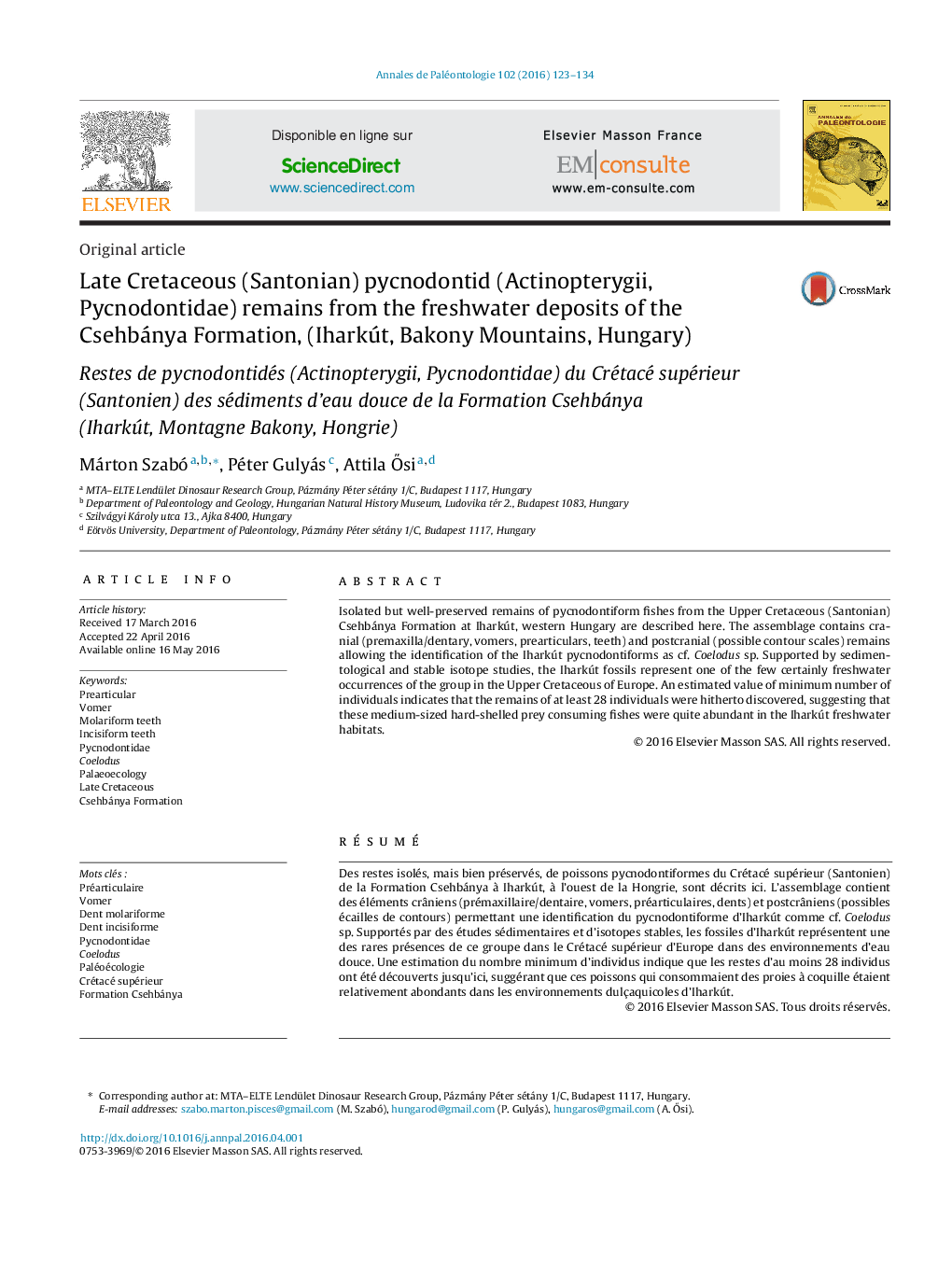| کد مقاله | کد نشریه | سال انتشار | مقاله انگلیسی | نسخه تمام متن |
|---|---|---|---|---|
| 4745267 | 1359696 | 2016 | 12 صفحه PDF | دانلود رایگان |

Isolated but well-preserved remains of pycnodontiform fishes from the Upper Cretaceous (Santonian) Csehbánya Formation at Iharkút, western Hungary are described here. The assemblage contains cranial (premaxilla/dentary, vomers, prearticulars, teeth) and postcranial (possible contour scales) remains allowing the identification of the Iharkút pycnodontiforms as cf. Coelodus sp. Supported by sedimentological and stable isotope studies, the Iharkút fossils represent one of the few certainly freshwater occurrences of the group in the Upper Cretaceous of Europe. An estimated value of minimum number of individuals indicates that the remains of at least 28 individuals were hitherto discovered, suggesting that these medium-sized hard-shelled prey consuming fishes were quite abundant in the Iharkút freshwater habitats.
RésuméDes restes isolés, mais bien préservés, de poissons pycnodontiformes du Crétacé supérieur (Santonien) de la Formation Csehbánya à Iharkút, à l’ouest de la Hongrie, sont décrits ici. L’assemblage contient des éléments crâniens (prémaxillaire/dentaire, vomers, préarticulaires, dents) et postcrâniens (possibles écailles de contours) permettant une identification du pycnodontiforme d’Iharkút comme cf. Coelodus sp. Supportés par des études sédimentaires et d’isotopes stables, les fossiles d’Iharkút représentent une des rares présences de ce groupe dans le Crétacé supérieur d’Europe dans des environnements d’eau douce. Une estimation du nombre minimum d’individus indique que les restes d’au moins 28 individus ont été découverts jusqu’ici, suggérant que ces poissons qui consommaient des proies à coquille étaient relativement abondants dans les environnements dulçaquicoles d’Iharkút.
Journal: Annales de Paléontologie - Volume 102, Issue 2, April–June 2016, Pages 123–134